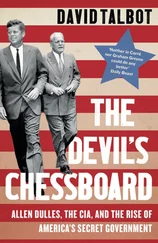Because the A’s didn’t have a lot of power, they couldn’t rely on three-run homers and big innings; they had to manufacture runs, to create them out of the slightest opportunities. As the lead-off hitter, Henderson was the catalyst, or, as he likes to say, “the creator of chaos.” He had remarkable strength (twice, he finished the season with a higher slugging percentage than Mark McGwire), but his principal role was to be a nuisance, a pest-to “get on base, any damn way I can,” and begin wreaking havoc on the defense.
As part of his strategy, he had developed one of the most distinctive and infuriating batting stances ever seen. Each hitter has a strike zone that extends roughly from his chest to his knees. Henderson, by collapsing his shoulders to his knees-by practically doubling over-made his strike zone seem uncommonly small; one sportswriter quipped that it was “the size of Hitler’s heart.” With so little room for the pitcher to throw a strike, Henderson would frequently eke out a walk. (In 2001, he broke Babe Ruth’s record for total walks, and is now second, behind Barry Bonds.) Or he would crush the ball-he is one of only twenty-five players in history with more than three thousand hits. Once he was on base, the chaos began: he would often steal second, then steal third; he stole home four times. In his first full year, he broke Ty Cobb’s American League record of ninety-six stolen bases in a season, which had stood since 1915; two seasons later, he blew past Lou Brock’s major-league mark of a hundred and eighteen. Thomas Boswell, of the Washington Post, wrote, “Not since Babe Ruth hit fifty-four home runs in 1920-thirty more than anyone else had hit in a season-has one of baseball’s fundamental areas of offensive production been in such danger of major redefinition… Now, perhaps for the first time, a player’s skill is challenging the basic dimensions of the diamond.”
His mere presence on the base paths was a force of psychic disruption. Distracted infielders made errors, and pitchers, finding themselves unable to concentrate, gave up easy hits to subsequent batters. As the former Yankee captain Don Mattingly has said, “Basically, he terrorizes a team.” Henderson would score in ways that made his heroics nearly invisible: he would often get a walk, then steal second, then advance to third on a ground ball, and, finally, come home on a routine fly ball to the outfield. In other words, he regularly scored when neither he nor his teammates registered a single hit.
But there was also something out of control about Henderson. A base stealer takes his team’s fortunes into his own hands; if he decides to run and gets thrown out, he can devastate a team’s chances for a big inning. In 1982, Henderson didn’t merely set a season record for steals; he also set one for being caught (forty-two times). The very traits that won him praise-bravado, guile, defiance-also made him despised. During a 1982 game against the Detroit Tigers, when he needed only one more base to tie Brock’s record, he singled but had no chance to steal, because there was a slow base runner on second. Violating every norm of the game, Billy Martin ordered the man on second to take such a big lead that he would get picked off. Henderson’s path was now clear, and he took off, sure that he was safe at second, but the umpire called him out, allegedly muttering, “You got to earn it.”
Baseball has an unspoken etiquette about lopsided games, and Henderson’s habit of stealing when his team was already trouncing an opponent was widely seen as unsportsmanlike. In 2001, while Henderson was playing with the San Diego Padres in a game against the Milwaukee Brewers, he took off in the seventh inning, when his team was leading by seven runs. The Brewers’ manager, Davey Lopes, who had been one of the most aggressive base stealers of his day, was so incensed that he stormed onto the field, yelling that the next time Henderson came up to bat the pitcher was going to “drill” him. The threat was clearly in earnest, and Henderson was removed from the game. “We’re old school,” Lopes said later.
And it wasn’t just the way Henderson ran the bases that irked traditionalists. In 1985, after being traded to the Yankees, he was asked what it would be like to play on the same field that once knew Joe DiMaggio and Mickey Mantle, and he replied, “I don’t care about them… It’s Rickey time.” When he hit a home run, he would stop and watch it go over the fence, then arc ostentatiously around first base, one elbow outstretched like a bird’s wing. Instead of simply catching a ball, he would make a show of snatching it out of the air. “I don’t appreciate that hot-dog garbage in my ballpark,” the former Orioles catcher Rick Dempsey, who once had to be restrained by an umpire from attacking Henderson, said.
Henderson earned a reputation for creating tumult off the field as well. He held general managers hostage with his contractual demands. “I’ve got to have my money guaranteed,” he’d say. Or, in one of his more Yogi Berra-like phrases, “All I’m asking for is what I want.” Once, when he couldn’t find his limousine upon leaving a ballpark, he was heard saying, “Rickey don’t like it when Rickey can’t find Rickey’s limo.” In 1989, the A’s signed him to a four-year contract worth twelve million dollars, which made him the highest-paid player in the game; but less than two years later, after several players surpassed that sum, he demanded a new contract. The pitcher Goose Gossage, who played with Henderson on the A’s, once said, “Henderson set a new standard for selfishness. He made Jose Canseco look like a social worker.” By the end of his career in the majors, Henderson was recognized as one of the best players of all time, but, in the view of many players and sportswriters, he was also “greedy,” “egomaniacal,” “Tropical Storm Rickey,” “the classic baseball mercenary,” and “the King of I.” In other words, he was the last player anyone thought would join the Golden Baseball League.
“I can’t be late,” Henderson said.
He was at the Los Angeles airport, waiting for a morning flight to Yuma, Arizona, where, for a July game against the Scorpions, the Golden Baseball League was hosting Rickey Henderson Night. (The first thousand fans to arrive at the game would receive Rickey Henderson bobble-head dolls.) The league, realizing that Henderson helped give it legitimacy, had offered him various perks to sign on, and, unlike the rest of the players, he didn’t have to endure long bus rides to away games-he flew by commercial airplane. And so, while the team was spending five hours on a bus to Yuma, Henderson picked up his bags and boarded the plane. He was wearing an elegant tan shirt and matching pants, and a gold Rolex studded with diamonds. During his career, he has earned more than forty million dollars in salary alone. He owns dozens of rental properties, as well as a hundred-and-fifty-acre ranch, near Yosemite National Park, where he spent time in the off-season with his wife and their daughters. He also has a Porsche, a Rolls-Royce, a Bentley, a BMW, a Mercedes, a Cadillac, a G.M. truck, a T-bird, and a Ferrari. “I’ve told major-league clubs, ‘Don’t worry about your bank account-I’ll play for free,’” Henderson said. “This ain’t about my portfolio.”
As he waited for the plane to taxi to the runway, he checked his cell phone to see if his agent had called with any word from the majors. “Nothing,” he said. After holding power over general managers for so long, Henderson seemed uncertain what to do now that they held power over him. He had even considered crashing a Colorado Rockies tryout for high-school and college players. He knew that his reputation had probably hurt his chances of being brought onto a team as an elder statesman and bench player. “There’s always that concern: will Rickey be willing to come off the bench?” Henderson said. “I would. If you let me retire in a major-league uniform, you won’t hear a peep out of me.” Henderson regularly scoured the news reports for injuries and roster changes in the majors, to see if there might be an opening.
Читать дальше











